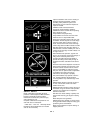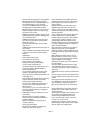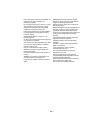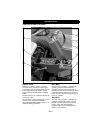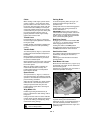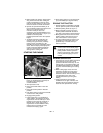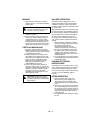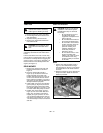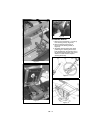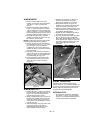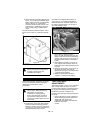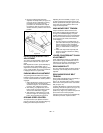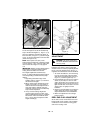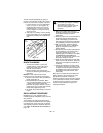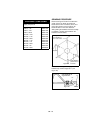
GB - 13
TRACTOR
1. Remove crating top, front, and sides.
2. Cut banding from around tractor, tires,
and armrest box.
3. Separate steering wheel from tire.
4. Remove rear mower belt shield from
manual lift handle.
Lift tractor up off axle crate supports to
sufficiently assemble tire and wheels to the
tractor.
Lower tractor down onto crate. Tractor may
now be driven or rolled off the crate. To allow
the tractor to roll freely without engaging the
engine or drive, a tow valve is provided. It is
located under the hood directly behind the
engine (see Figure 3).
REAR MOWER
1. Remove rear mower from crate and
position behind tractor as shown in
Figure 5.
2. Pivot rear mower lifter handle (1,
Figure 5) up and back to lower rear
mower pull plate on the pull yoke.
Position mounting flange (2, Figure 6)
on the center front of the rear mower
frame under the pull plate (3, Figure 6)
and fasten securely with two fasteners
already installed in pull plate.
3. Install V-belt (4, Figure 5) onto double
groove pulley (5, Figure 5) located on
the right rear side of the frame. Raise
rear mower belt idler (6, Figure 5), and
run V-belt under idler pulley as shown.
4. Position rear mower clutch guard (7,
Figure 5) over rear mower shaft and
pulley area, and fasten right side to
support (8, Figure 5) with a 1/4”–20 x
1/2” round-head slotted screw. Secure
rear flange of guard with (2) 1/4”–-20 x
1/2” hex head cap screws, lock washers,
and nuts.
Check Tire Pressure
SEAT
1. Fasten seat /slide assembly studs (1,
Figure 7) into slotted holes in hinge
mounting plate (2, Figure 7) four places
and fasten with four 5/16” flat washers
and nuts.
2. Remove armrests (3, Figure 8) from box
strap to the crate. Attach to seat with
fasteners provided.
ASSEMBLY
CAUTION: Handle banding
material with caution. Use heavy
leather gloves. Banding is sharp!
CAUTION: Use jack stands under
tractor whenever elevated off the
tires.
CAUTION: Avoid injury! Explosive
separation of tire and rim parts is
possible when they are serviced
incorrectly:
• Do not attempt to mount a
tire without the proper
equipment and experience to
perform the job.
• Do not inflate the tires above
the recommended pressure.
• Do not weld or heat a wheel
and tire assembly. Heat can
cause an increase in air
pressure resulting in an
explosion. Welding can
structurally weaken or
deform the wheel.
• Do not stand in front or over
the tire assembly when
inflating. Use a clip-on chuck
and extension hose long
enough to allow you to stand
to one side.
Figure 5



